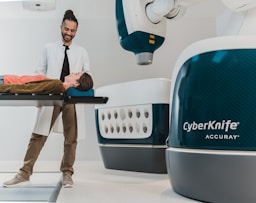Telemedicine for Opioid Addiction: A Modern Approach to Suboxone Treatment and Mental Health Support
Opioid addiction remains one of the most pressing public health crises in the United States. With overdose rates soaring and traditional treatment centers overwhelmed, many individuals are left searching for safer, more accessible solutions. One of the most effective tools emerging in this battle is telemedicine for opioid addiction. This innovative approach allows patients to receive life-saving treatments like Suboxone and Buprenorphine from the comfort of their homes—while also addressing co-occurring mental health issues such as depression.
In this comprehensive guide, we’ll explore how telemedicine, online Suboxone treatment, and holistic support models are transforming the landscape of addiction recovery.
Understanding Opioid Addiction and Its Mental Health Impact
Opioid addiction doesn’t just affect the body—it deeply impacts the mind. Many individuals struggling with opioid use disorder (OUD) also suffer from depression, anxiety, PTSD, or other mental health challenges. In fact, studies show that nearly 50% of people with substance use disorders have a co-occurring mental illness.
This dual-diagnosis scenario creates a complex cycle. Opioids are often used to self-medicate emotional pain, and prolonged use only worsens depressive symptoms. Breaking this cycle requires a treatment plan that addresses both the physical cravings and the psychological triggers.
What Is Suboxone and How Does It Work?
Suboxone is a combination of two medications—Buprenorphine and Naloxone. Buprenorphine is a partial opioid agonist that helps reduce cravings and withdrawal symptoms without producing the high associated with full opioids. Naloxone is an opioid antagonist that prevents misuse of the medication.
Together, these compounds make Suboxone one of the most effective treatments for opioid dependence. It allows patients to stabilize, focus on recovery, and rebuild their lives without the constant disruption of cravings and withdrawal.
Why Telemedicine for Opioid Addiction Is a Game Changer
Before the rise of telehealth, getting access to Suboxone often required in-person visits to specialized clinics, which could involve long wait times, transportation challenges, and stigma. Telemedicine for opioid addiction eliminates many of these barriers by bringing expert care directly to patients via secure video calls or online portals.
Key Benefits of Telemedicine for Opioid Addiction:
Convenience: Patients can schedule appointments around their lives—no need to take time off work or arrange childcare.
Privacy: Consultations happen in a private setting, reducing the stigma often associated with addiction treatment.
Accessibility: Rural and underserved communities gain access to experienced providers without the need for travel.
Continuity of care: Regular check-ins and online support ensure patients stay on track with treatment.
Online Suboxone Treatment: What to Expect
Getting started with online Suboxone treatment is straightforward. The process typically involves:
Initial assessment: Patients complete a medical evaluation, often through an online intake form and a telemedicine consultation.
Prescription: If deemed appropriate, a licensed provider prescribes Suboxone (Buprenorphine/Naloxone), often sent electronically to a local pharmacy.
Ongoing monitoring: Patients attend regular virtual check-ins to monitor progress, adjust dosages, and address any side effects or concerns.
Mental health support: Many telemedicine platforms integrate therapy, psychiatric care, and support groups into their treatment model.
Some platforms even offer 24/7 messaging with care teams, allowing patients to get help in real-time when cravings or depressive episodes hit.
Depression and Opioid Addiction: A Two-Way Street
As mentioned, depression and opioid addiction often go hand in hand. For some, depression predates substance use, while for others, it develops as a result of prolonged drug abuse. Either way, ignoring mental health in the recovery process can lead to relapse.
Telemedicine for opioid addiction provides an excellent opportunity to address these overlapping issues. Many providers now offer integrated care models that include:
Medication-Assisted Treatment (MAT) with Buprenorphine/Suboxone
Online therapy or psychiatric consultations
Cognitive Behavioral Therapy (CBT) for depression
Mindfulness and relapse prevention strategies
Treating the mind and body together leads to better long-term outcomes and reduces the likelihood of relapse.
Buprenorphine: The Backbone of MAT
At the core of Suboxone is Buprenorphine, a medication that has revolutionized the treatment of opioid use disorder. Unlike methadone, which requires daily clinic visits, Buprenorphine can be prescribed via telehealth, making it a flexible and scalable option for recovery.
When administered correctly, Buprenorphine:
Reduces withdrawal symptoms and cravings
Improves treatment retention
Lowers the risk of overdose
Supports mental clarity, allowing individuals to engage in therapy
Telemedicine allows providers to closely monitor Buprenorphine use and make personalized adjustments without requiring patients to disrupt their daily routines.
Is Telemedicine Safe for Addiction Treatment?
The safety and effectiveness of telemedicine for opioid addiction have been extensively studied. Research shows that outcomes for patients using telehealth platforms are comparable—or even superior—to those receiving in-person care. Patients report feeling more in control, more engaged, and less stigmatized when receiving care remotely.
Additionally, with e-prescribing, secure video consultations, and HIPAA-compliant systems, online Suboxone treatment is both private and secure.
Who Is a Good Candidate for Online Suboxone Treatment?
Telemedicine isn't a one-size-fits-all solution, but many individuals benefit from its flexibility and accessibility. Good candidates include:
People with mild to moderate opioid use disorder
Individuals in stable housing with internet access
Those with co-occurring mental health conditions like depression or anxiety
Patients who’ve relapsed and want to restart treatment discreetly
Individuals living in rural areas or far from addiction treatment centers
Even those transitioning from inpatient rehab to outpatient care can benefit from ongoing virtual support.
How to Start Telemedicine for Opioid Addiction Today
If you or someone you love is struggling with opioid addiction and looking for a modern, compassionate approach to care, telemedicine for opioid addiction might be the answer. Getting started typically involves:
Finding a reputable telemedicine provider specializing in MAT.
Scheduling a virtual intake or assessment.
Beginning your customized treatment plan with Suboxone, therapy, and support.
Many telemedicine platforms accept insurance and offer sliding scale options, making care affordable and accessible.
Final Thoughts: The Future of Recovery Is Digital
The opioid epidemic demands innovative solutions—and telemedicine for opioid addiction is proving to be one of the most powerful tools we have. By combining the proven effectiveness of Suboxone and Buprenorphine with digital accessibility, this model helps thousands of individuals reclaim their lives every day.
Moreover, by integrating treatment for co-occurring disorders like depression, online care models are ushering in a more holistic, patient-centered approach to recovery.
Addiction is a disease, not a moral failing—and treatment should be as compassionate, accessible, and modern as possible. With telemedicine, that future is already here.


3750 N Henry Blvd Stockbridge GA 30281


